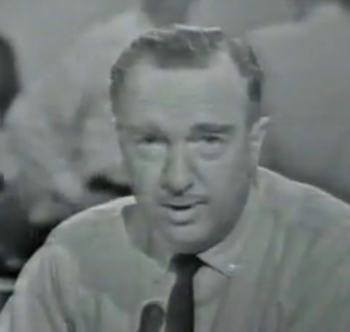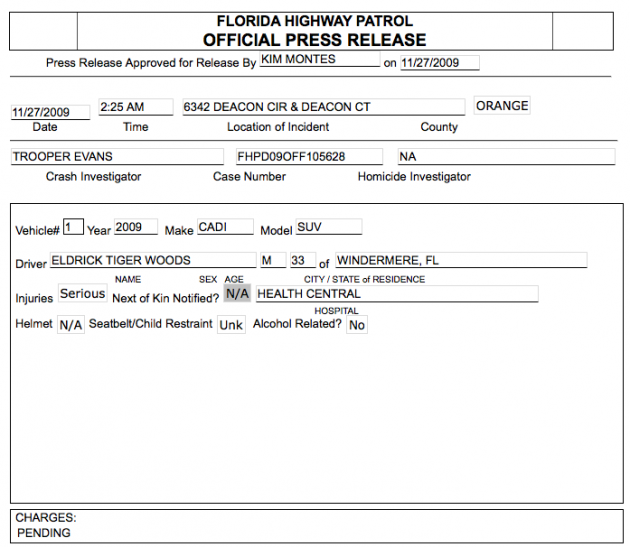 The year is 1963. It’s November. At 1:40 PM ET, CBS News anchor Walter Cronkite comes on the air. “In Dallas, Texas, three shots were fired at President Kennedy’s motorcade in downtown Dallas. The first reports say that President Kennedy has been seriously wounded by this shooting.” Rapidly, everyone in America descends upon the closest television set to tune in.
The year is 1963. It’s November. At 1:40 PM ET, CBS News anchor Walter Cronkite comes on the air. “In Dallas, Texas, three shots were fired at President Kennedy’s motorcade in downtown Dallas. The first reports say that President Kennedy has been seriously wounded by this shooting.” Rapidly, everyone in America descends upon the closest television set to tune in.
Thankfully, we have not yet had a tragedy of that magnitude in the age of the realtime web. But we will. It’s just a matter of time.
If it were to happen today, most people would still turn to their TV sets to get the most up-to-date information on such an event. We saw that on September 11, 2001. But a large number of people would also now turn to the web. And there they would likely find the information they were looking for faster than those watching on television. We’ve seen it time and time again recently.
Earthquakes, the massive San Diego fires, the shootings in Mumbai, the situation in Iran, and even Michael Jackson’s death. The realtime web beat the mainstream media easily to each of these stories. And this disparity will only increase going forward.
We’re entering a new age of realtime information. Some people don’t like that because they fear inaccurate reports. They’ll cite the Balloon Boy example as how things get out of control on services like Twitter. Well you know where the Balloon Boy reports were way more out of control? On CNN and the other cable news channels. And you know where I first heard sound arguments that there is no way that balloon could hold a full-grown child? Twitter.
Those same people seem to want to believe that the mainstream media does all kinds of fact-checking before rushing to the air. That’s why it took them 45 minutes longer today to get to the Tiger Woods car accident story, they conclude. But let’s revisit what CNN posted those 45 minutes later:
(CNN) — Golfer Tiger Woods was injured in a car accident near his home, Florida officials say.
That’s it. If it took them 45 minutes to figure that much out and get it up, they’re in more trouble than I imagine.
Others will say that CNN took the time to make sure they only wrote “injured” rather than “in serious condition,” as the first reports indicated. But that’s not true either. Watch this video for proof of that.
Those people seem to believe that BNO News, which was the first source of the story for many of us, simply pulled the “serious condition” statement out of thin air. That’s not the case. How do I know? Because I had Michael van Poppel, who is behind BNO News, send me the report that he based his information on (pasted below). The key part to look at is obviously where it says “Injuries: Serious.”

This is the release directly from the Florida Highway Patrol. BNO News labeled it correctly as a “report.” This is journalism. Just because BNO News got to it and posted it some 45 minutes before CNN doesn’t mean they pulled it out of nowhere based on nothing or hearsay. This is the information from the police report.
It turns out that Tiger Woods is okay. And that’s great. But you know where I also heard that first? Twitter. That’s the point. This is the realtime information cycle. We get delivered news, the story unfolds a bit (as it did when various local reports of the incident starting popping up on Twitter and Google, again, way before CNN), it unfolds a bit more, and if we keep watching the full story is revealed — right before our eyes. You have to be smart enough not to take everything as absolute fact, and to have your own filters for information, but this is the way going forward. And it’s captivating, to say the least.
Some will say they don’t mind waiting an extra hour to get just the facts. That’s fine. But that’s not really true. It may be true for a relatively small incident like a minor car crash, but imagine if a national (or worldwide) catastrophe happened. Do you honestly believe that any one of those people would be content to sit back and wait for the 100% fact-checked version of the story? No. Not one of them would.
The same was true back in 1963. Watch the entire Cronkite broadcast below. You’ll notice he says things like, “their [the President and Texas Governor Connally] condition is as yet unknown.” The report than switches over to KLRD in Texas where they note, “as you can imagine, there are many stories that are coming in now as to the actual condition of the President. One is that he is dead.” That was not known as the time, and was not known until much later in the broadcast.
Did anyone care that they were stating unconfirmed things on the air? No. In fact, had they not, everyone would have turned to another channel. The point is that people want this information. Should a disclaimer be included that it’s just a report or unconfirmed? Of course, but it was today, just as it was back in 1963.
The difference is that had the Kennedy assassination happened today, it would not have taken 38 minutes from the time of President Kennedy being declared dead to the time Cronkite broke the news on the air. Actually, it may have. But it would have been reported on services like Twitter much sooner. Had it played out that way, where do you think people would turn the next time there was an event unfolding in realtime?
I understand that a lot of people view Twitter as stupid, and certainly not worth $1 billion dollars. But step back for a second and look at it this way: For much of this argument, I’m just using “Twitter” the way my colleague Steve Gillmor uses it, which is to say, as a word not tied to one brand but meaning the “realtime web.” It doesn’t matter what method we use for this realtime information dissemination, what matters is that it is happening. And this is the future.
That said, there is no denying that right now, Twitter, the brand, is the winning channel for this new type of news consumption. It’s the Walter Cronkite for realtime information. And when the next major event happens, an increasing number of us will be huddled around our computer screens, watching. And even more the time after that…
And that’s the way it is.